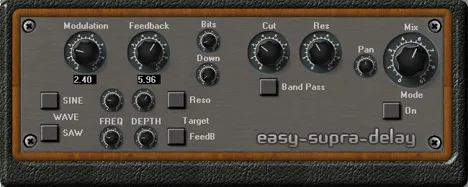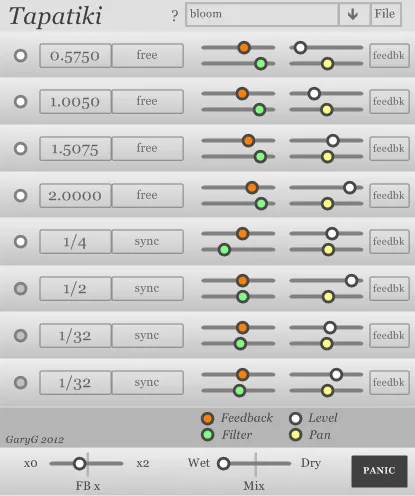The world of vintage effects holds a special place in the hearts of musicians and sound engineers. The warmth, unpredictability, and unique character of analog equipment often become key elements in creating authentic sound. Among such legends are tape echo machines, in particular, the iconic Wem Watkins Custom Copicat. It was this device that became the source of inspiration for the developers of the WatKat plugin from GSi.
WatKat: The Rebirth of a Tape Echo Legend
WatKat is not just another delay plugin. It’s a digital reincarnation of the same vintage tape echo machine that breathed life and added depth to countless recordings of the last century. GSi developers have put in maximum effort to convey not only the functionality, but also the very soul of the original Copicat.
What’s so special about this plugin? It reproduces all those “flaws” that are actually the character of tape echo. Lo-fi sound, natural tape noise, slight unevenness of repeats – all this is an integral part of WatKat. It does not strive to be perfectly clean or surgically precise. On the contrary, its beauty lies in its analog “dirtiness” and unpredictability.
Imagine: you turn off the plugin, but the “tape” remains loaded. The next time you turn it on, as in the original device, the tape slightly bends near the pinch roller, which leads to a periodic pitch drop during echo playback. Or, if the plugin “works” for a long time, it “heats up”, and the background hum becomes more noticeable. The tape never completely erases, leaving barely audible “ghosts” of the previous signal. The pinch roller motor may slightly “float” in speed (flutter), and this effect is amplified if you “touch” it during operation. The record/playback heads quickly “get dirty”, which requires their periodic “cleaning” – and WatKat simulates this process as well. All this is not bugs, but features that make the sound alive and unique!
WatKat is ideal for those seeking authentic vintage echo for guitar, vocals, synthesizers, or any other instrument. It can add a psychedelic touch, create a dub atmosphere, or simply add warmth and depth to your sound. Its lo-fi character works great in genres such as reggae, dub, psychedelic rock, surf rock, and also for creating atmospheric soundscapes.
Controls and Features
Despite the deep modeling of analog processes, controlling WatKat remains intuitive. The interface reflects the main elements of the original machine:
-
Swell: Adjusts the volume of echo repeats. Allows you to adjust the balance between the dry signal and the effect.
-
Sustain: Controls the number of repeats. Be careful with this knob, because at high values it can lead to self-excitation, creating interesting sound loops and final effects in the style of dub!
-
Gain 1 (left channel): Adjusts the volume of the input signal for the first input (usually left).
-
Gain 2 (right channel): Adjusts the volume of the input signal for the second input (usually right). This allows you to work with a stereo signal or process two different sources simultaneously, if your DAW supports it.
-
Head 1, Head 2, Head 3: These switches allow you to select one or more playback heads. Each head is located at a different distance from the recording head, which gives different delay times. By combining heads, you can get more complex rhythmic echo patterns.
Performance and Compatibility
One of the nice features of WatKat is its low load on the CPU and memory. This makes it an excellent choice even for projects with a large number of tracks or for use on less powerful computers.
The plugin supports popular VST and AU formats, which ensures its compatibility with the vast majority of modern digital audio workstations (DAW) on Windows and MacOS operating systems.
If you are looking for a vintage echo with character that reproduces all the subtleties and “flaws” of classic tape machines, but is also a convenient digital plugin, WatKat from GSi is exactly what you need. Add some history and analog magic to your mixes!



